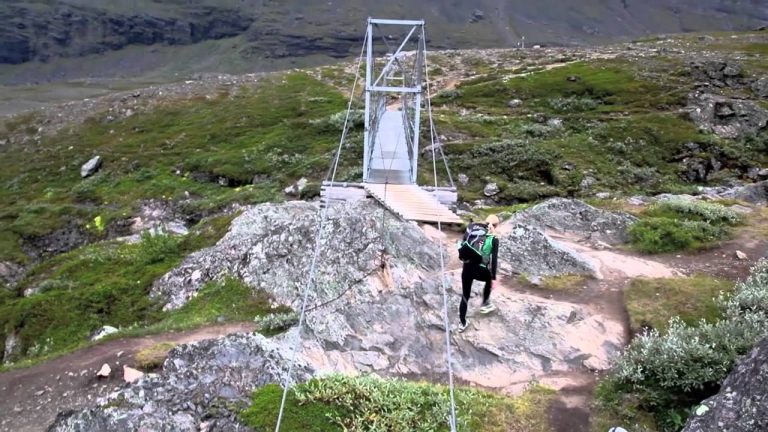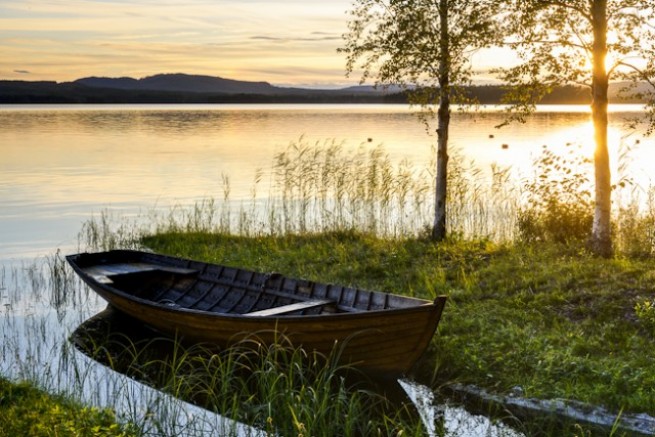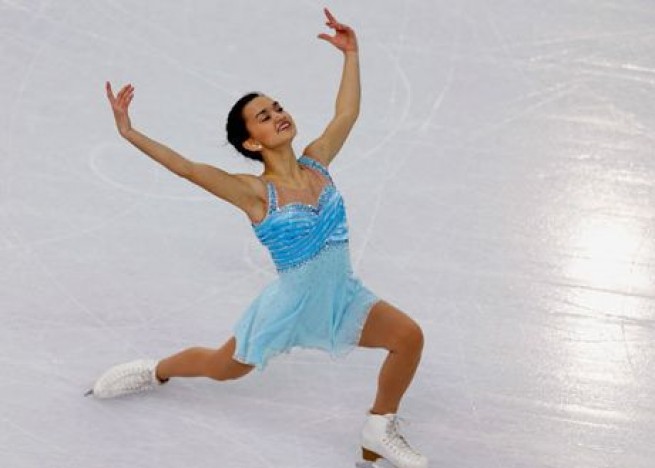If you feel like checking out the highlights, here are Oslo’s ten most visited attractions. Experience sculpture parks, amusement parks, museums, botanical gardens, opera and ballet and more.
Here are the 10 top attractions in Oslo.

Vigeland Park
Vigelandsparken is one of Norway’s most visited attractions with more than 1 million visitors every year. The unique sculpture park is the life work of the sculptor Gustav Vigeland (1869-1943) with more than 200 sculptures in bronze, granite and cast iron. Vigeland was also responsible for the design and architectural outline of the park. A monumental artistic creation with a human message that is well worth seeing. The park is open all year at all times and is a popular recreation area.

Fram Museum
Fram is the strongest wooden ship ever built and still holds the records for sailing farthest north and farthest south. At the Fram Museum you can come on board the ship and see how the crew and their dogs lived and managed to survive in the coldest and most dangerous places on earth – the Arctic and the Antarctic.
In 2013 the new Gjøa building opened with new exhibitions on the Arctic, and the Northwest Passage – from the first trials four hundred years ago to find a northern route to the East until Roald Amundsen’s journey through the passage in 1903-06.
The exhibitions are illustrated with the help of modern design, photographs, film, an interactive map, special lighting effects, an model of the Fram frozen in the ice – and the ship itself. In the polar simulatorlets you experience both the cold and the dangers of polar expeditions over a hundred years ago.
The exhibition is translated into ten languages: English, French, German, Italian, Spanish, Russian, Japanese, Chinese, Korean and Norwegian.
Exclusive polar merchandise is available in the museum shop.

The Holmenkollen Ski Museum
A historic landmark in the Norwegian consciousness, Holmenkollen embodies more than a century of skiing competitions.
Inside the ski jump is the Holmenkollen Ski Museum, the oldest of its kind in the world. The museum presents over 4,000 years of skiing history, as well as Norwegian polar exploration artifacts.
The observation deck on top of the jump tower offers panoramic views of Oslo.
Open 365 days a year!

Tusenfryd Amusement Park
One park – a thousand opportunities! TusenFryd is Norway’s largest amusement park, with over 30 fun attractions and great games, shops and places to eat.
TusenFryd’s newest attraction is Thors Hammer, which opens in June. The indoor 3D adventure is packed with the latest in park technology.
The park features attractions for all ages, including large and small rollercoasters, carousels, a log ride, a 5D haunted house and much more.
Barnas Fryd and Frydskogen are packed with rides and activities for small kids. In summer you can enjoy BadeFryd, a water park with a swimming pool, a swimming river, a huge slide and beach volleyball courts.
The TusenFryd Package at visitoslo.com includes hotel accommodation, Oslo Pass and entry to the park.

The Norwegian Museum of Science and Technology
(Norsk Teknisk Museum) is the national museum for technology, industry, science and medicine. The museum has over 20 permanent and temporary exhibitions about energy, oil, industry, medicine, airplanes, cars and trains.
The Science Centre is a place for curious minds. Explore natural science and technological principles in the areas of energy, physical phenomena, the body, mathematics and the universe. The Robot Centre and The Planetarium are both found here.
The National Museum of Medicine explains how people’s lives have changed over the last 150 years through improvements in public health, medicine and healthcare. The museum is integrated in the Museum of Science and Technology.
The museum café serves Italian and Greek food, hot dogs, coffee, ice cream and cakes.
CLOSED: Mondays (winter), 1 January, 1 May, 17 May, 24-26 December, 31 December.
Norwegian name: Norsk Teknisk Museum

The Viking Ship Museum
presents great Viking ship discoveries from Gokstad, Oseberg and Tune as well as other finds from Viking tombs around the Oslo Fjord.
The museum displays the world’s two best-preserved wooden Viking ships built in the 9th century, as well as small boats, sledges, a cart with exceptional ornamentation, implements, tools, harness, textiles and household utensils.
Norwegian name: Vikingskipshuset

The Natural History Museum
includes several museums as well as the Botanical Garden and greenhouses. The Zoological Museum shows animals from all over the world, and the Mineralogical-Geological Museum building includes the Paleontological Museum and Norway’s only dinosaur museum.
The opening hours and prices below apply to the greenhouses and the museums. They are closed on Mondays, 1 January, 17 May, 23-26 December and 31 December.

Botanical Garden
The botanical variety and diversity in the Botanical Garden makes it an ideal place to relax from the stress of city life. Most of the area is designed as an Arboretum. Entrance to the garden is free. The Botanical Garden is open longer than the museums.
Norwegian name: Naturhistorisk Museum

Akershus Fortress,
located in the city centre by the Oslo Fjord, is a great place to discover Oslo’s history and a beautiful place to enjoy a summer day.
History
The building of Akershus Castle and Fortress was commenced in 1299 under king Håkon V. The medieval castle, which was completed in the 1300s, had a strategical location at the very end of the he
adland, and withstood a number of sieges throughout the ages. King Christian IV (1588-1648) had the castle modernised and converted into a Renaisssance castle and royal residence. During the 17th and 18th century the castle fell into decay, and restoration work only started in 1899.
Guided tours
Guided tours of the Fortress are available to the public in summer, starting at the Visitor Centre.
May: Saturday-Sunday at 12.00 (Norwegian) and 14.00 (English)
June: Daily at 12.00 (Norwegian) and 14.00 (English)
1 July-12 August: Daily at 11.00, 13.00 and 14.00 (Norwegian/English), 15.00 (Norwegian, jail only) and 16.00 (Norwegian/English)
13 August-31 August: Saturdays and Sundays 13.00 (Norwegian) and 15.00 (English)
Free with the Oslo Pass.
Guided tours for groups are also available.
Events
The Fortress area is used for a number of big events, including concerts, holiday celebrations and ceremonies. Changing of the guards (HM The King’s Guards) takes place every day at 1.30 pm.
Norwegian name: Akershus Festning

The National Gallery
Norway’s largest public collection of paintings, drawings and sculptures. The National Gallery’s central attractions include Edvard Munch’s The Scream and Madonna and paintings by Cézanne og Manet.
The museum’s exhibitions present older art, with principal emphasis on art from Norway. The permanent exhibition shows highlights from the collection and national icons from the romantic period until the mid-1900s. Also on display are works by international painters and sculptors, including the French impressionists.
Free entry on Sundays.
The National Gallery is part of the National Museum of Art, Architecture and Design.
Norwegian name: Nasjonalgalleriet
The Norwegian National Opera & Ballet (See featured image above)
is Norway’s largest performing arts institution, with over 600 employees working in about 50 professions and trades.
After the opening in 2008, the Opera House in the old harbour area of Bjørvika soon became a landmark in Oslo. Designed by the Norwegian architects Snøhetta, it is the first opera house in the world to let visitors walk on the roof.
The new opera house offers a rich and varied programme from three stages: The Main House (1369 seats), Second House (400 seats) and the Studio (200 seats). The Opera Roof and Foyer are also used for concerts.
Norwegian name: Den Norske Opera & Ballett
The Norwegian National Opera & Ballet is Norway’s largest performing arts institution, with over 600 employees working in about 50 professions and trades.
After the opening in 2008, the Opera House in the old harbour area of Bjørvika soon became a landmark in Oslo. Designed by the Norwegian architects Snøhetta, it is the first opera house in the world to let visitors walk on the roof.
The new opera house offers a rich and varied programme from three stages: The Main House (1369 seats), Second House (400 seats) and the Studio (200 seats). The Opera Roof and Foyer are also used for concerts.
Norwegian name: Den Norske Opera & Ballett
The Norwegian National Opera & Ballet is Norway’s largest performing arts institution, with over 600 employees working in about 50 professions and trades.
After the opening in 2008, the Opera House in the old harbour area of Bjørvika soon became a landmark in Oslo. Designed by the Norwegian architects Snøhetta, it is the first opera house in the world to let visitors walk on the roof.
The new opera house offers a rich and varied programme from three stages: The Main House (1369 seats), Second House (400 seats) and the Studio (200 seats). The Opera Roof and Foyer are also used for concerts.
Norwegian name: Den Norske Opera & Ballett
Source: Visit Oslo














































